Hollow sharpening (ROH)
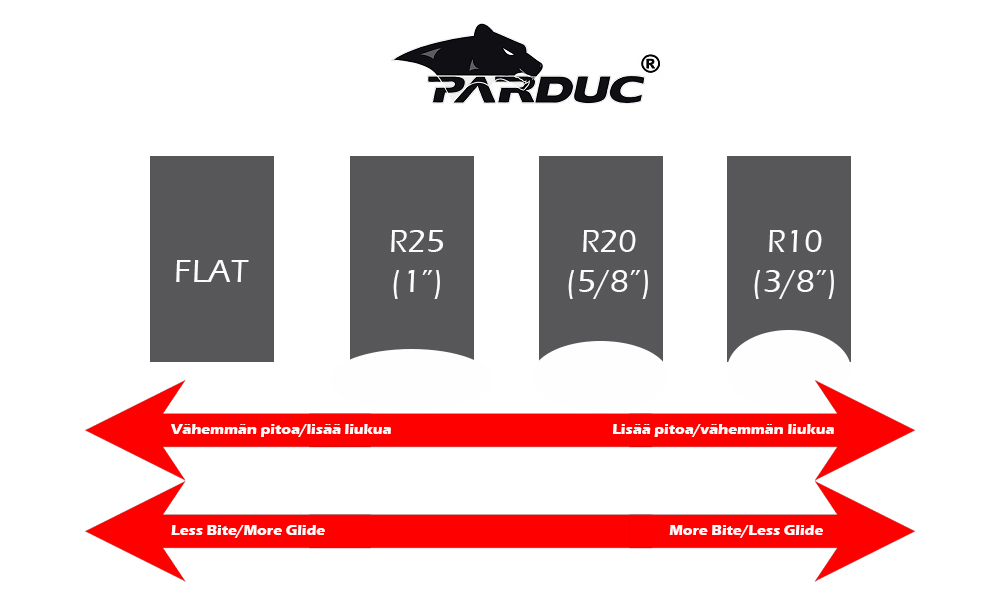
Groove type- and depth on skate blade can be changed on sharpening. The most common groove type is radius sharpening, ROH (Radius of hollow). On this sharpening method, on the center of the blade has round “groove”. When the ROH groove is perfectly centered to the blade, the both edges of the skate blade will be extremely sharp. These two sharp edges bites the ice, and makes tight turning possible.
Changing the depth of the groove (size of the radius), changes how the skate will perform on ice.
Small radius (r=10) creates extremely “sharp” blades. Skate bites on ice extremely hard, and the grip and agility is maximal. Small radius fits for offensive player who needs high agility. On the other hand, skating with small radius is exhausting and the skating efficiency is bad. Small radius gives high agility and acceleration, but has lack of glide and speed.
Big radius (r=30) gives good glide and excellent skating efficiency. Large radius does not give the agility and acceleration that you might get with the smaller radius. Big radius fits best for the defenceman who needs fast skating, even on backward skating.
Good basic setting for skate radius is r20…r25mm. With this radius the skate performs well on most situations.
On hollow sharpening, the most important thing is to create the groove perfectly on center of the blade. Some skate sharpeners must be adjusted depending on the skate blade thickness. This means, that you always must measure the blade thickness, before sharpening.
Always check the groove centering on blade, using the Parduc® T5 measuring gauge.
Skate profiling
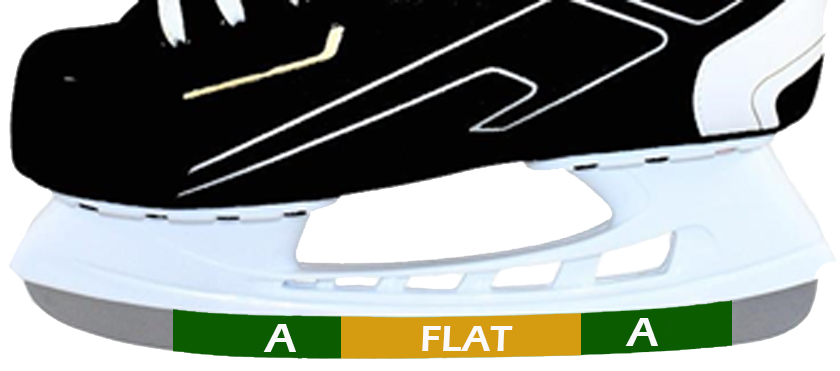
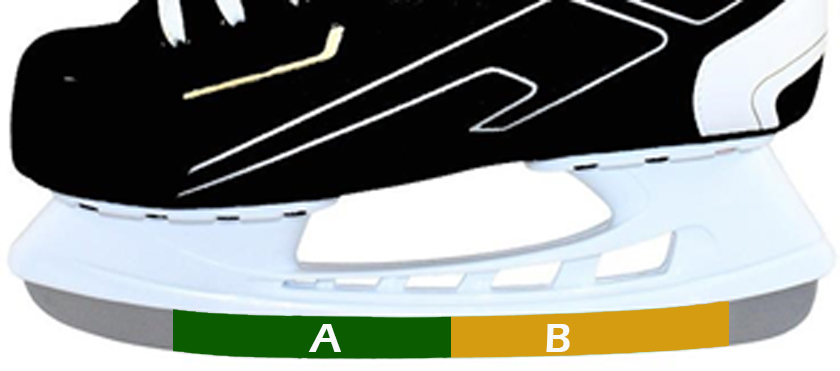
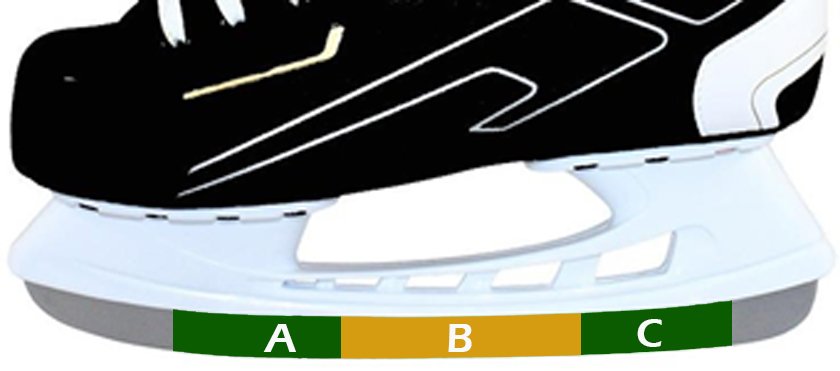
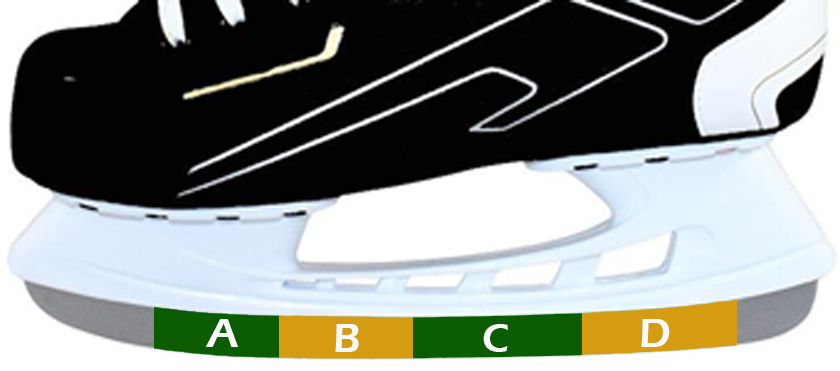
Skate blade profile includes usually one or more different radiuses. In some cases, in the middle of the blade has a flat section.
When the the radius and/or the arc angle is changed, the skate behavior chances. The flat surface on the middle of the blade controls how steady and gliding the skate is. Steady and good glide usually causes lack of agility.
-The bigger the area of the skate touching the ice is, the more steady and gliding the skate usually is.
-The smaller the area of the skate touching the ice is, the more agile the skate usually is.
- Front section is for the agility and acceleration.
- Middle section is for glide and speed
- Rear section is for stability
The bigger the middle section is (the length of the straight section), the more wider the turns are. On the other hand, long glide section gives good glide and fast skating. Short glide section makes tight turns possible, but you will lose speed, skating efficiency and glide.
You can change the skating position to natural forward lean position. This can be made by tilting the profile, or moving the blade pivot point backwards on the skate. New skates, directly from the shop should always be profiled for the skater. Always try several different profiles, and find the best profile for you.
Skate profiling is made using automatic profiling skate sharpener, Parduc® P40. P40 uses pre-shaped profiling templates to achieve the desired profile to the skate blade. Flat glide surface can be made using separate flat template, or by using one of our ready templates from the COUGAR -series. Flat surface length is usually 30…70mm. When using our FLAT template together with the RADIUS-series, you can customize the glide surface length.
Skating position can be changed to forward lean position, by tilting the profile, or moving the pivot point backwards. Some of our profiling templates are already designed to change the skating position to forward lean position. Profiles with the natural forward lean, are marked with the pivot point distance marking; “Pitch XXmm”
When the blade is center profiled (Neutral rocker), the skating is usually easy when moving forward, or backwards. This setting usually fits for players that are playing normally between the blue lines.
When the profile is forward lean profile (Offensive rocker), the skating position is slightly leaning forward. Skating forward is more easier and faster. Quick stick operation is easier. Forward lean profile fits best for the offencive players.
When profiling the skates, always mark the used profile and the sharpening radius to the skate. This way you will help other sharpeners to perform identical sharpening for the players.
Parduc profile templates 2022:
RADIUS -series: Single radius
COUGAR -series: Single radius and flat glide surface
EAGLE -series: Two radius
FOX -series: Three radius (Forward lean)
BEAR -series: Four radius (Forward lean)
BADGER -series: Oval/ellipse, radius changes for the whole distance of the blade (Forward lean)